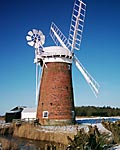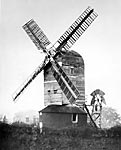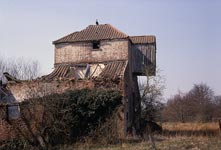



|
Norfolk Mills |
 |
 |
 |
 |
The site database search engine is below and on the Norfolk Mills Index page
Last site update 12th October 2025
You can use this search engine to search for all pages within the site that may contain a
name of your choice:
This website contains a considerable amount of historical and genealogical data for in excess of Information on Norfolk windmills and watermills. |
At the time of Domesday, in the 11th century, there were some 580 recorded watermills in Norfolk, but no windmills. The earliest known windmill in Norfolk was recorded at Rackheath in 1268 and the earliest identified windmill site in Norfolk was at Barton_Bendish in 1338, although Thomas Thurne gave a windmill in Waxham to Hickling Priory c.1190. |
Domesday Book of Norfolk |
In Norfolk alone there were upwards of 580 water-mills, five of which were at Holt, five at Wymondham, five at Snettisham, four at Flitcham, four at Suffield, four at Earlham and four at Sedgeford; they varied much in value, some of them being rated as high as £3, while others were returned as worth no more than 3s. The produce of water-mills is variously stated in the Survey, sometimes in grain, sometimes partly in money and partly in grain, and occasionally from the fishery in the mill stream. |
An Analysis of the Domesday Book of the County of Norfolk, -
Rev. George Munford, Vicar of East Winch, 1858 |
By the early 1800s only 80 or 90 watermills were still functioning but there were still 300 - 400 windmills in the county. By the late 1800s the water and windmilled stone ground flour was fast giving way to roller mill produced flour. The taste of the people was changing and the new technology was capable of producing flour far more efficiently and faster. Horning_Mill_Loke_postmill was probably the first postmill and possibly even the first windmill to be fitted with William Cubitt's patent sails c.1807 that were eventually to be used by virtually all Norfolk windmills. Stalham_smockmill is the only other known contender. The first steam mill for auxiliary power was installed at Dickleburgh in 1834. In 1939 Claude Messent recorded that there were only 60 watermills still standing and by 2004 the number had gone down to 52 with only around 20 still containing any remnants of machinery and many have now disappeared completely. Forever. Standing watermills and windmills are now a rarity and this website is intended to provide a pictorial and historical record of all the mills I can trace here in Norfolk, England. Jonathan Neville |
The 1563 the Statute of Apprentices forbade anyone to enter a trade who had not served an apprenticeship. Some modification to this Statute occurred but it remained on the statute books until 1814. Prior to 1710 nothing exists for Apprentices in the archives in London.
From 1710 - 1811 The Government decided to use the system to generate some revenue, hence the Stamp Duty records from Inland Revenue. Duty was payable by the master at the rate of 6d for every £1 under £50 that he received for taking on the apprentice and 1/- for every £1 above that sum. The deadline for payment was one year after the expiry of the indenture.
|
Pages are continually being updated and added - so any and all help with information, anecdotes and photographs would be greatly appreciated. |
Photographs for Sale |
|
We
hope you will find something of interest amongst the photos and snippets
of information put together. |
Many individuals and organisations have between them, provided a vast amount of assistance and archive information for inclusion on this website. Please take time to visit the credits_page to view some of the information sources. |
Do visit our sister sites www.hempstead-norfolk.co.uk and www.itteringham.com |
Copyright © Jonathan Neville 2014 |